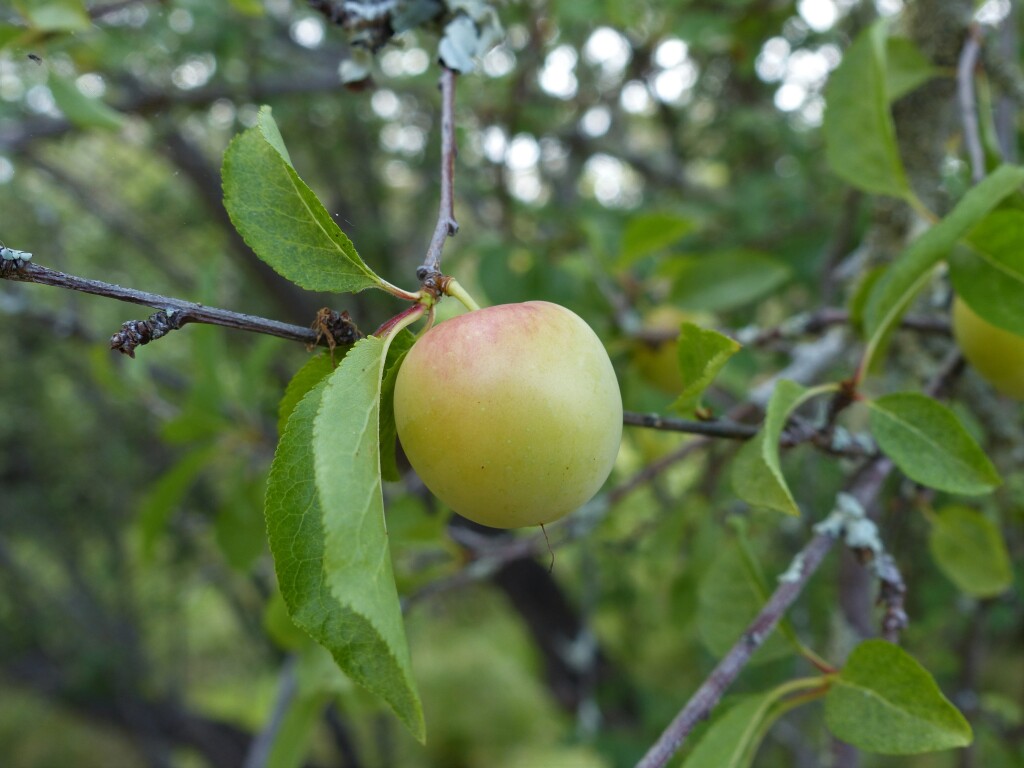Prunus cerasifera
Ehrh. Cherry-plumSlender deciduous large shrub or small tree to c. 7 m high, juvenile phase sometimes spiny; young twigs glabrous, glossy. Leaves ovate to oblong-obovate, mostly 2–5 cm long, 1–3 cm wide, base cuneate, apex acute, margins crenate or serrate, glabrous above, more or less glabrous below except for some pubescence on veins, green to deep reddish-purple; petiole 5–15 mm long. Flowers solitary or in clusters of 2–4 on short lateral shoots, appearing with or before the leaves; pedicels slender, glabrous. Sepals rounded, usually glabrous, margins glandular; petals obovate to suborbicular, white or pink. Drupe subglobose, 15–25 mm diam., glabrous, red or yellow, flesh soft, juicy and sweet; stone ovoid, smooth, keeled. Flowers Oct.–Dec.
Wim, VVP, VRiv, MuF, GipP, OtP, WaP, Gold, CVU, GGr, DunT, NIS, EGU, HSF, HNF, Strz, VAlp. Also naturalised WA, SA, NSW, ACT, Tas. Native of Europe, south-west Asia. In its various forms, a widely cultivated street, ornamental or fruit tree, or a hardy rootstock for other plums. Naturalised widely in cooler districts of the State.
Purple-leaved cultivars ('Nigra' and 'Atropurpurea') are widely grown and are naturalised in some areas. Some progeny of these may either hybridize with or tend to revert to the commoner green-leaved form, so that a full range of intermediates between the 2 may be seen within a population.
Jeanes, J.A.; Jobson, P.C. (1996). Rosaceae. In: Walsh, N.G.; Entwisle, T.J., Flora of Victoria Vol. 3, Dicotyledons Winteraceae to Myrtaceae, pp. 556–585. Inkata Press, Melbourne.
 Spinning
Spinning



